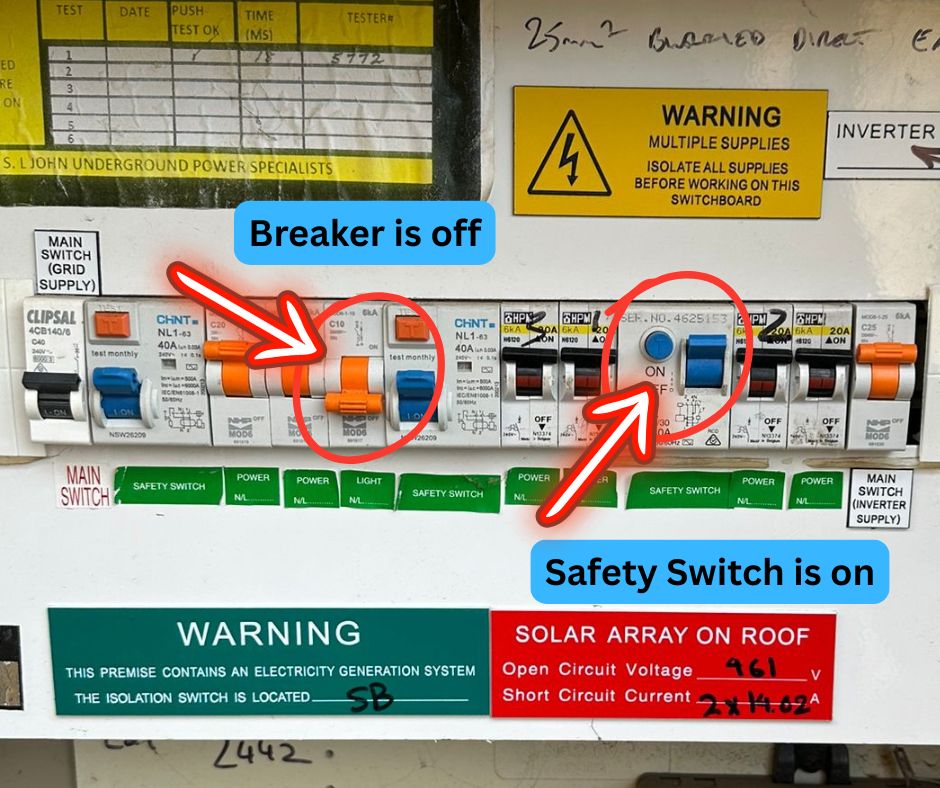Identifying Critical Warning Signs That Your Switchboard Needs an Urgent Upgrade
If you are frequently dealing with tripped circuit breakers, flickering lights, unsettling burning odours, outdated fuses, and a lack of safety switches, these are serious warning signs that your switchboard may not comply with current Australian Standards (AS/NZS 3000). Such troubling issues could pose significant threats, including electric shock, damage to appliances, or even the risk of devastating fire hazards. It is vital to have a licensed electrician assess your electrical system promptly to ensure both your safety and compliance with established regulations.
Understanding the Vital Importance of Switchboards in Your Home’s Electrical Framework
The switchboard in your residence plays a pivotal role, functioning as the central hub of your electrical system. If your switchboard is outdated or showing signs of malfunction, it could severely jeopardize your safety and comfort. A significant number of older homes, particularly in Melbourne’s outer southeast, still depend on electrical systems that were installed many decades ago, predating the implementation of today’s electrical safety standards. Upgrading your switchboard is not merely a routine maintenance task; it is an essential measure to ensure your home aligns with current regulations while minimizing any potential safety risks linked to outdated installations.
In this article, we will meticulously explore the key warning signs indicating that your switchboard may require replacement. We will stress the importance of adhering to regulatory compliance and highlight the dangers associated with ignoring these crucial indicators.
1. Regular Circuit Breaker Trips Indicate Possible Overload Issues
If you find that your circuit breakers are tripping frequently, particularly when multiple devices are in use, it strongly suggests that your switchboard may be facing overload issues. These repetitive interruptions can signal poor load distribution, inadequate wiring, or aging breakers that may no longer operate safely. Frequent circuit breaker trips can disrupt your daily routine and may lead to even more serious electrical problems if not addressed promptly. For further insights on enhancing the reliability of your electrical system, consider exploring our Electrical Panel Upgrade Services.
2. Flickering or Dimming Lights Point to Voltage Fluctuation Issues
If you notice that your lights flicker or dim when appliances start up, this often indicates problems associated with voltage instability. Such issues are typically caused by loose or degraded connections within the switchboard or a system that struggles to effectively manage load surges. These electrical fluctuations can lead to further complications, including damage to sensitive electronic devices. It is crucial to address this concern swiftly to maintain a stable and safe electrical environment throughout your home.
3. Signs of Burning Smells or Heat Marks Signal Severe Risk
If you experience a burning smell near your switchboard or notice visible signs of charring, discoloration, or melted plastic, these are alarming indicators. These symptoms generally signify overheating or arcing occurring inside the switchboard, both of which significantly increase the risk of fire. If you encounter any of these troubling signs, it is imperative to take immediate action to protect your home and loved ones from potential dangers. For more official information related to electrical fire risks, please visit the Victorian Building Authority.
4. Presence of Outdated Ceramic Fuses Indicates the Need for Enhanced Safety Features
Finding ceramic fuses in your switchboard, particularly those installed before the 1990s, suggests that your electrical system may be outdated. Unlike modern circuit breakers, ceramic fuses lack rapid-response safety features and fail to provide adequate protection against electric shock. Current wiring standards, specifically AS/NZS 3000:2018, mandate that all final sub-circuits must have safety switch (RCD) protection. If your switchboard still contains ceramic fuses, it is not only outdated but also poses potential dangers that require prompt attention.
5. Warm or Hot Switchboard Panels Indicate Overloaded Circuits
Your switchboard should ideally maintain a temperature that is consistent with the surrounding environment during operation. If you find that its surface feels warm or hot to the touch, this usually indicates poor internal connections or overloaded circuits. Continuous exposure to excessive heat can lead to insulation degradation or even cause permanent damage to the internal wiring. It is essential to investigate and rectify this issue to prevent further complications and to ensure the safety of your home’s electrical system.
6. Outdated Switchboards Cannot Support Modern Appliance Demands
As the usage of high-demand electrical appliances in modern homes continues to grow, including larger air conditioning systems, induction cooktops, electric vehicles, and extensive remote work setups, older switchboards often struggle to safely accommodate these loads. Many of these outdated systems were not designed to meet contemporary demands, rendering them vulnerable to dangerous overload scenarios. Upgrading to a modern switchboard is vital to ensure that your home’s electrical system can efficiently and securely support all of your electrical needs.

7. Lack of Safety Switches (RCDs) Represents a Major Compliance Concern
If your switchboard is devoid of safety switches (RCDs), your property fails to meet essential modern protection standards. RCDs are now mandatory for all new installations and electrical work, as stipulated by AS/NZS 3000. Moreover, recent amendments to rental property regulations enforced by Energy Safe Victoria since March 29, 2023, require that all rental homes in Victoria must have compliant circuit breakers and RCDs. It is critical to review and comply with these updated standards to ensure the safety of your property and its inhabitants.
8. Potential Asbestos Presence in Older Switchboards Poses Significant Health Risks
Older switchboards, especially those installed prior to 1985, may contain asbestos within their backing panels or internal components. This presents serious health hazards, as exposure to asbestos can result in severe respiratory issues and other health complications. The legal removal of asbestos must be conducted by licensed asbestos professionals. It is advisable to arrange a comprehensive Home Electrical Inspection with a qualified electrician before undertaking any modifications or removals of older switchboard housings.
9. Unusual Sounds from Your Switchboard Indicate Serious Electrical Issues
If you hear unusual noises such as buzzing, popping, or cracking sounds coming from your switchboard, or if you notice breakers with scorch marks or melted plastic, these are clear indications of internal arcing or overload. Such issues require immediate attention to prevent the risk of fire or damage to your appliances. Swift action is essential to uphold the safety and functionality of your electrical system.
10. Legal and Insurance Implications Linked to Non-Compliant Switchboards
An outdated or non-compliant switchboard can endanger your insurance coverage in the unfortunate event of an electrical fire. Compliance with Australian Standards is mandated by both federal and state authorities. Any property undergoing renovations, upgrades to appliances, or changes in tenancy must adhere to the latest safety requirements to prevent legal repercussions and ensure the well-being of all residents.
Why Choose Direct Point Electrical for Your Switchboard Upgrade?
Located in outer east Melbourne, Direct Point Electrical specializes in switchboard upgrades that ensure compliance with current standards while significantly enhancing your home’s overall safety. Our team of skilled electricians is dedicated to upgrading legacy homes, ensuring adherence to:
- AS/NZS 3000:2018 Wiring Rules
- Energy Safe Victoria requirements
- All local DNSP and safety notice obligations
- Certification through Certificate of Electrical Safety (COES)
Our comprehensive Switchboard Upgrade Services include assessment, safe removal of asbestos, installation of RCDs, and optional surge protection to improve the safety and efficiency of your home’s electrical system.
Frequently Asked Questions About Switchboard Upgrades
Q: How often should I have my switchboard inspected?
A: It is advisable to have your switchboard inspected every five years or whenever you introduce significant electrical loads to your home to ensure ongoing safety and compliance.
Q: Can I perform a switchboard upgrade by myself?
A: No, switchboard upgrades must be executed by a licensed electrician to guarantee safety and adherence to current regulations.
Q: How long does a switchboard upgrade usually take?
A: Most upgrades can be completed within a single day, minimizing disruptions to your household activities and ensuring safety is swiftly achieved.
Q: Will an upgraded switchboard increase my home’s market value?
A: Absolutely, an upgraded electrical system is attractive to potential buyers and can significantly enhance your property’s value in the competitive real estate market.
The Article: Switchboard Upgrade Warning Signs: Is Your Home Safe? first appeared on https://writebuff.com
The Article Warning Signs of a Switchboard Upgrade: Is Your Home Safe? Was Found On https://limitsofstrategy.com

